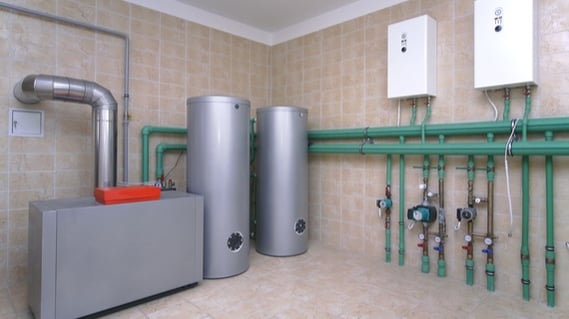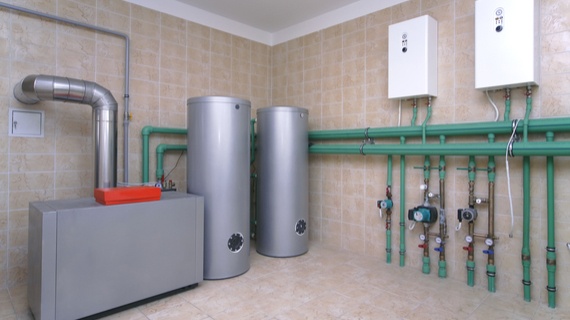
Keeping your water systems safe and compliant can be a complex process which usually begins with having a legionella risk assessment carried out to identify any issues within your system. The way you manage your system then will differ depending on whether you’re storing hot or cold water, as there are differences in the guidelines for both.
In this blog we go into the details, in-line with relevant regulatory guidance, to help you remain compliant.
Storing hot water
It is likely that storing water will increase the risk of legionella on your site. There needs to be careful monitoring of the system to ensure that the temperature doesn’t reach a level that encourages bacterial growth and that water is not allowed to stagnate.
What do you need to do if you’re storing hot water?
As required by Part G of Building Regulations 2010, a hot water system must be designed and fitted in such a way that it protects against the effects of temperature and pressure on a day-to-day basis, as well as in the event that anything in the system fails.
The specific requirements, and the way to achieve them, will depend on the type of hot water storage system you have: unvented or vented.
Vented hot water storage systems
A vented storage tank is widely used in the UK and relies on gravity to distribute hot water around the system. Water is supplied to the vessel directly from a dedicated storage cistern. In order to remain safe and for the vented vessel to be compliant with guidelines, you must:
1. Check that the top of the vented storage vessel is connected to a suitable vent pipe, which is no less than 19mm in internal diameter, open to the atmosphere and rises above the level of water in the cold water cistern.
2. Fit a device, such as a temperature relief valve, to the heat source or the storage tank itself that keeps the temperature of the water under 100 C by dispelling water.
3. For direct heat sources, ensure that there is a “non-self-resetting energy cut out” which disconnects heat supply to the storage vessel in the event that is overheats.
4. For indirect heat sources, install an “overheat cut-out” that disrupts the supply of heat.
5 . Prevent people from being harmed by the discharge of hot water from safety devices in the system by installing appropriate pipework.
Unvented hot water storage systems
An unvented storage vessel is a more modern invention and differs in that it does not have a vent pipe to the atmosphere. The vessel is supplied with cold water from a pipe, which is then heated directly or indirectly. The safety measures to remain compliant are to:
1. Install at least two independent safety devices to the unvented storage vessel which controls the temperature of the water and prevents it from exceeding 100 C.
2. Ensure that the system includes pipework that discharges water from safety devices at an appropriate and visible point in the atmosphere to keep building users safe.
Other considerations include minimising the time it takes for water to travel between the hot water storage system and the hot water outlet – if it takes too long, the temperature may drop to a level that allows legionella bacteria to grow.
Storing cold water
As mentioned above, storing water introduces further potential risks (such as water stagnation) into the system, and if these are not managed properly, legionella could grow and harm anyone in contact with the contaminated water.
What do you need to do if you’re storing cold water?
Installation and materials
Firstly, you should identify that the cold storage tank has been installed in line with The Water Supply (Water Fittings) Regulations 1999 (WRAS). These guidelines explain the safe way to install a tank, for example, ensuring that the pipe supplying water to the tank is fitted with an adjustable device that shuts off the water supply once it has reached the correct level. It’s also important to follow the relevant British Standards guidelines, for example BS1212 advises that a brass or plastic “diaphragm float” should be used as the adjustable device.
In the event that water overflows and rises above the level it should, an overflow pipe and a warning pipe must be installed. The overflow pipe will discharge water without causing any further damage to the building and the warning pipe will alert building users that the storage tank is overflowing and needs tending to.
Traditionally, cold water storage cisterns have been made with galvanised low carbon steel which can corrode easily and release contaminants into the water. Today, they should be made with polyethylene, polypropylene, or polyvinyl chloride – all of which are lightweight, robust, resistant to corrosion, hygienic and flexible enough to be transported through small openings.
HSG724 Part 2
Further guidance from HSE’s HSG724 publication on controlling legionella in hot and cold water systems states that doing the following will help keep water systems safe:
- Installing a tightly fitted lid to the top of the cold water cistern to prevent dirt or other potential nutrients for legionella to feed on from getting into the water.
- Fitting insect and vermin screens to protect pipework that is open to the atmosphere.
- Ensuring that any screens that are fitted are unable to hold water.
- Connecting multiple cold water storage tanks to one another in such a way that forces them to fill equally and draws water off through each of the tanks.
- Making sure the cold water tank has access ports that allow for easy inspection, maintenance and cleaning.
- Connecting the vent pipe to a separate drain and fitting a tundish to discharge water into a safe and visible place, rather than into the cold water storage tank as this can lead to fluctuations in water temperature and increase the risk of legionella.
- It is advised that the volume of stored cold water is minimal and doesn’t exceed the amount required for one day’s usage (for healthcare buildings 12 hours total storage capacity is recommended).
- Checking that water flows regularly to avoid stagnation.
Monitoring and cleaning
Following a legionella risk assessment, it is essential to regularly inspect the condition of the water tank both internally and externally. The screens and the lids should be examined to fit correctly and that thermal insulation remains in good condition to safeguard against temperature extremes.
In order to prevent legionella from growing, the tank must be cleaned and disinfected. This can be through water chlorination or flushing. The temperature should also be checked at least once a year at the ball valve and at the incoming mains supply – it should be at a maximum of 25 °C if it connected to other domestic outlets, or 38 °C if it is connected to only a hot water vessel only.
Conclusion
Whether or not you are storing hot or cold water, it is a legal requirement to assess the risk of legionella in your water system. This will, in turn, allow you consider and plan what other safety checks you need to carry out and at what frequency. This, along with following the regulatory advice above will help you to keep your entire system safe, and your water clean and wholesome.
To find out whether your water system is compliant, download our free 'Legionella compliance checklist'.







